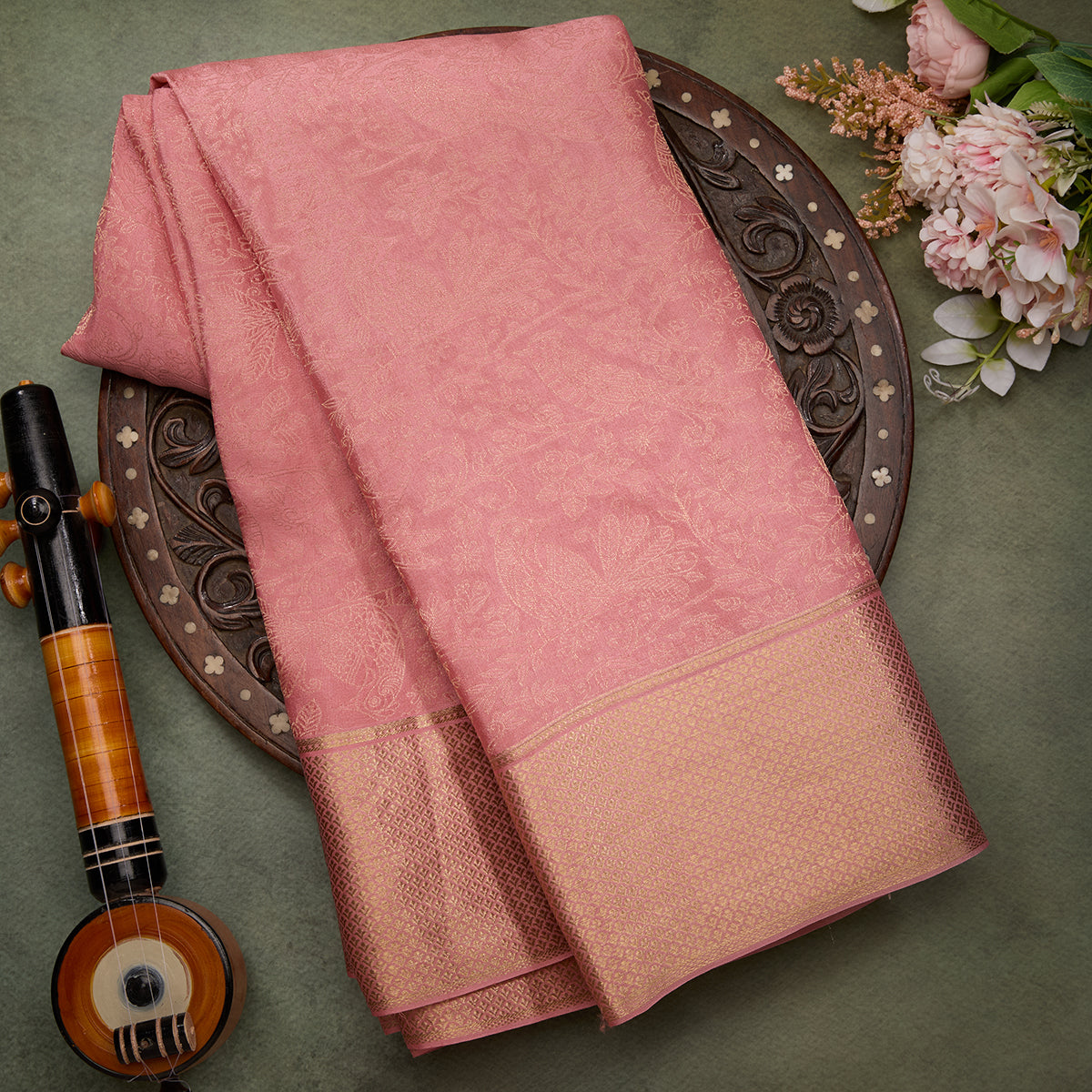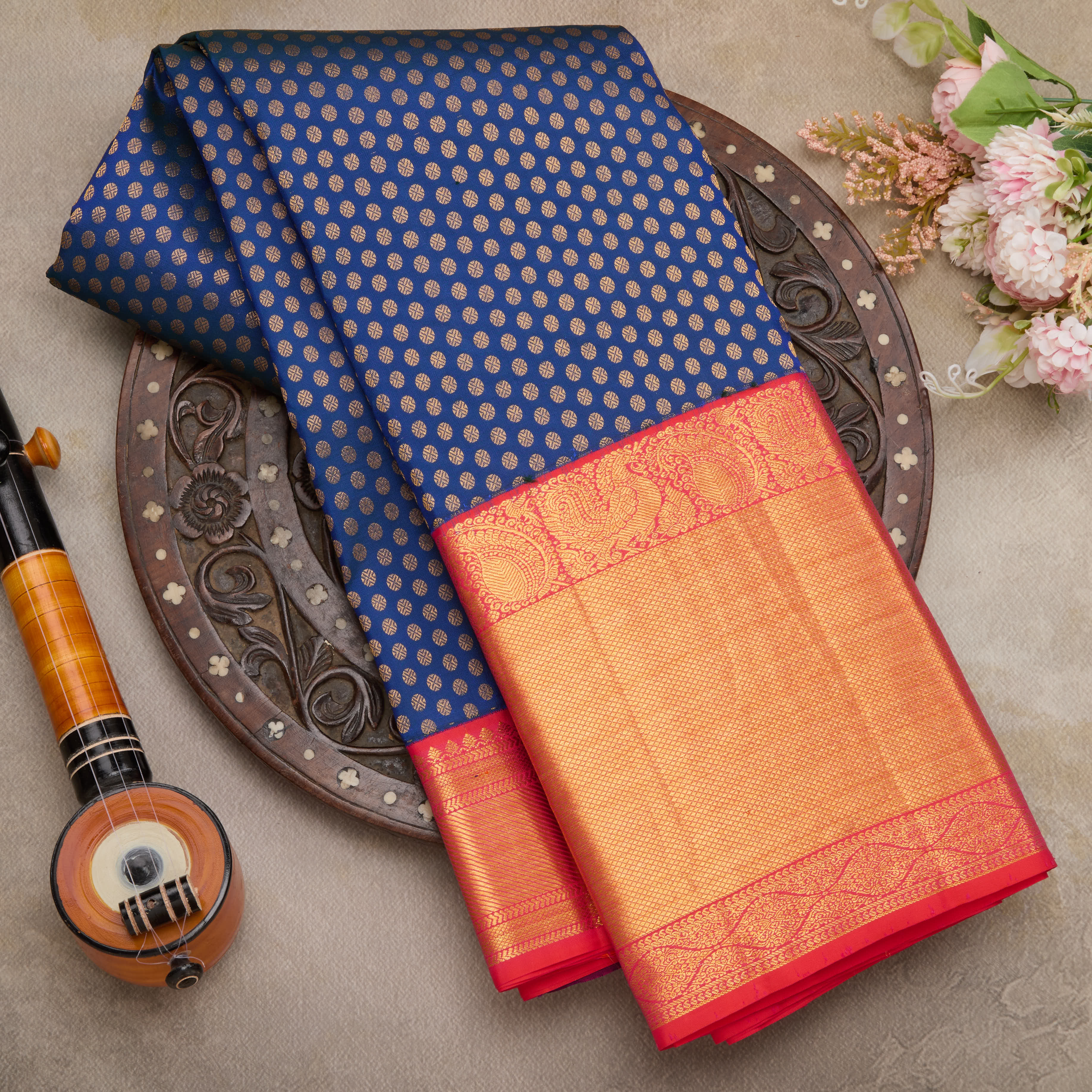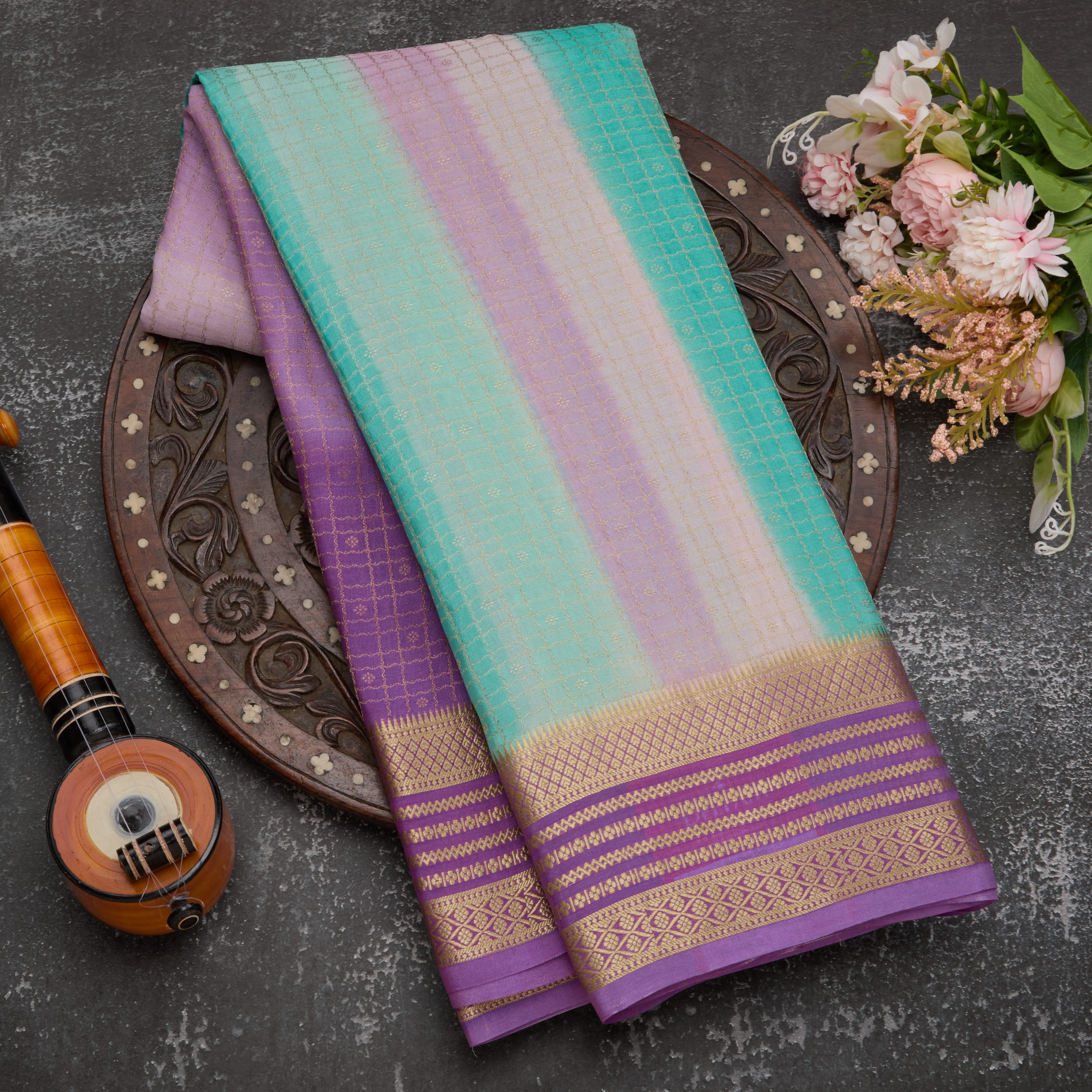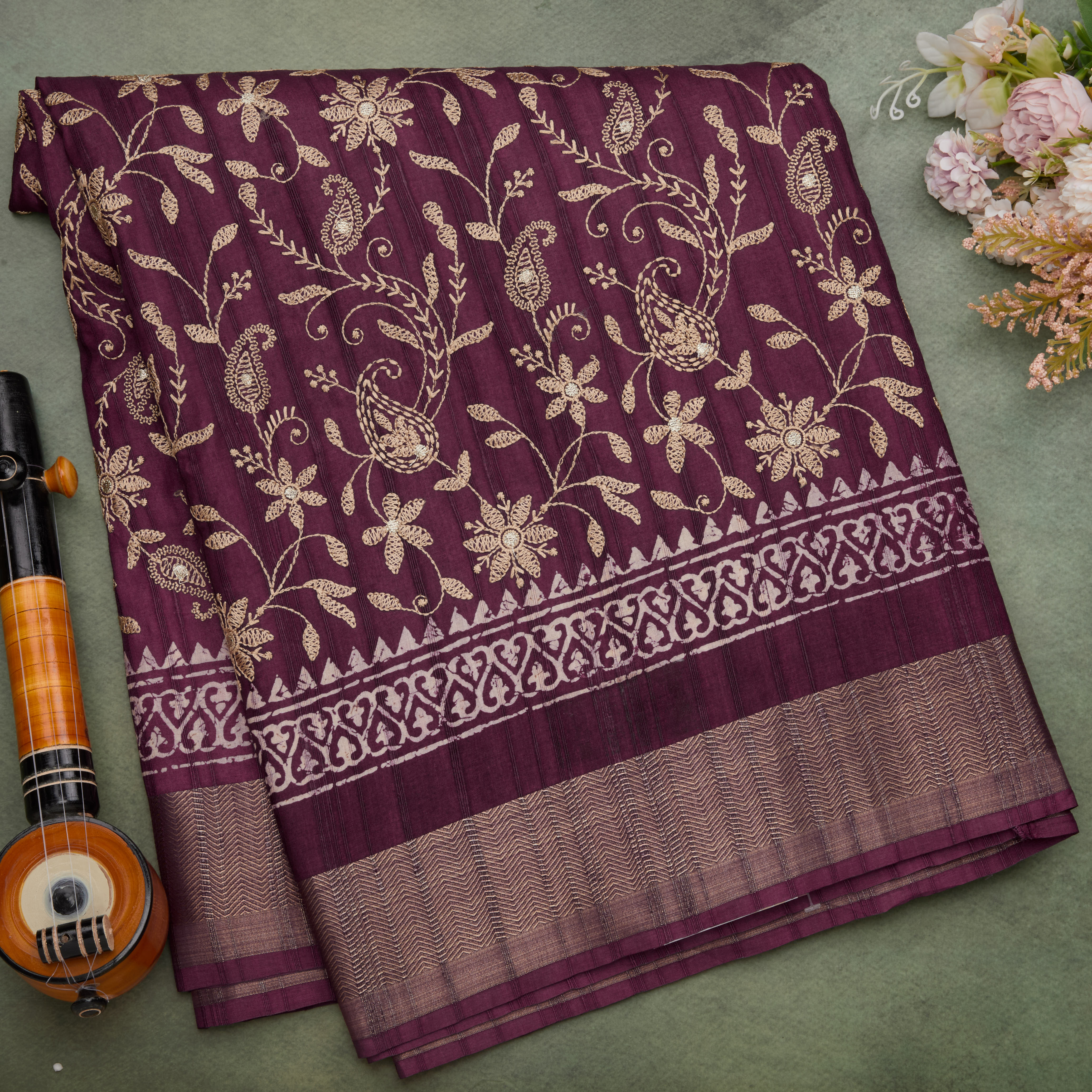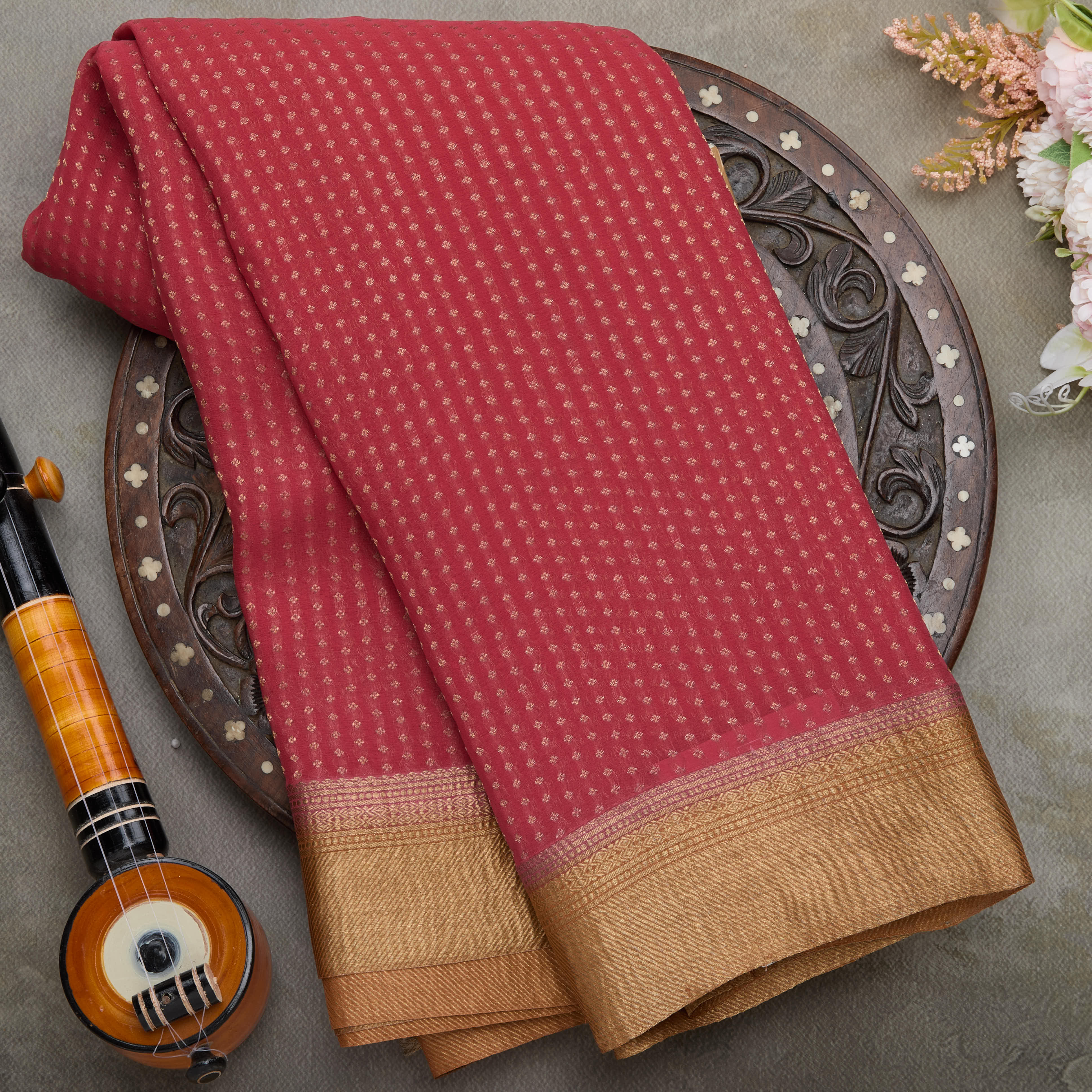Art of Weaving: A Journey into the World of Silk Saree Weaving

Table of Contents
Step into the enchanting world of silk saree weaving, where every thread tells a story of intricate craftsmanship and timeless elegance. In this blog, we embark on a journey into the art of weaving, with a special focus on the renowned brand Deepam Silks and their exquisite collection of silk sarees.
Imagine skilled artisans meticulously weaving delicate strands of silk, transforming them into breathtaking works of art that drape gracefully around the body. At Deepam Silks, this ancient craft is elevated to new heights, with each saree bearing the hallmark of exceptional quality and unparalleled beauty.
Deepam Silks: A Tapestry of Heritage and Elegance in Silk Saree Weaving
Deepam Silks takes great pride in preserving the art of silk saree weaving, passed down through generations. With their deep-rooted heritage and unwavering commitment to craftsmanship, they continue to create sarees that are treasured by women across the globe.
As you explore Deepam Silks' collection, you'll be captivated by the array of designs and patterns that adorn their sarees. From traditional Kanchipuram weaves to contemporary motifs, their sarees reflect the rich tapestry of Indian culture, blending tradition with modern aesthetics.
But it's not just the designs that make Deepam Silks stand out; it's the attention to detail and the use of the finest materials that truly set them apart. Every saree is meticulously crafted with handpicked silk and embellished with intricate borders, delicate embroidery, and exquisite motifs, ensuring a masterpiece that exudes elegance and charm.
Also read: Saree Styling Ideas For Every Occasion
Process of Silk Saree Weaving
The process begins with selecting the finest silk threads, known for their lustrous sheen and strength. These threads are carefully wound onto bobbins, ready to be transformed into the masterpiece we know as a saree. The weaver then sets up the warp, the longitudinal threads, and the weft, the horizontal threads, creating the foundation of the fabric.
With each pass, the shuttle glides gracefully, interlacing the weft threads through the warp. It's a rhythmic dance of precision and patience, as the intricate patterns and motifs slowly emerge. The weaver's keen eye ensures that each thread finds its rightful place, maintaining the symmetry and beauty of the design.
Once the weaving is complete, the saree undergoes meticulous finishing touches—careful trimming of loose threads, delicate embroidery, and sometimes even embellishments with beads or sequins.
Finally, the masterpiece is ready, an exquisite silk saree that embodies the essence of craftsmanship and tradition. From the weaver's skilled hands to the graceful drape of the wearer, silk sarees weave tales of artistry and heritage that continue to captivate hearts even in the modern era.
Types of Silk Saree Weaving Techniques
Kanchipuram Weaving
Hailing from the town of Kanchipuram in Tamil Nadu, India, pure Kanjivaram silk sarees are characterized by their heavy silk fabric and intricate zari work. The weaving process involves using multiple silk threads to create vibrant and durable sarees that are perfect for weddings and special occasions.
Banarasi Weaving
Originating from Varanasi in Uttar Pradesh, India, pure Banarasi georgette sarees are renowned for their opulence and grandeur. The weaving technique involves weaving silk and metallic threads, such as gold or silver zari, into stunning designs like floral motifs, brocades, and intricate patterns.
Also read: Create a Timeless Look with Deepam Silks Banarasi Saree Style
Patola Weaving
Patola sarees, crafted in Gujarat, India, are known for their double ikat weaving technique. Skilled artisans dye the warp and weft threads separately before meticulously aligning and weaving them together. The result is a saree with captivating geometric patterns on both sides, creating a reversible masterpiece.
Dharmavaram Weaving
Dharmavaram silk sarees, originating from Dharmavaram in Andhra Pradesh, India, are characterized by their contrasting borders and vibrant colors. These sarees are woven with a combination of silk and cotton threads, resulting in a lightweight fabric with intricate designs and motifs inspired by temples and nature.
Baluchari Weaving
Baluchari sarees, crafted in West Bengal, India, showcase intricate woven narratives from mythology and folklore. Skilled weavers bring these stories to life by depicting them in the saree's pallu (end piece). The weaving technique involves using silk threads to create detailed motifs and scenes, making each Baluchari saree a storytelling masterpiece.
Also read: The Different Varieties Of Silk Sarees
As we conclude our journey into the world of silk saree weaving, we are left in awe of the artistry and craftsmanship that goes into creating these timeless treasures. The intricate weaving techniques, the careful selection of materials, and the dedication of skilled artisans all come together to produce sarees that are more than just garments—they are works of art.
From the traditional Kanchipuram weaves to the contemporary designs of Deepam Silks, each saree tells a story of heritage, elegance, and the rich tapestry of Indian culture. So, the next time you drape yourself in a silk saree, take a moment to appreciate the journey it undertook to adorn you in its ethereal beauty.
Also read: Step Up Your Indian Traditional Saree Look from Deepam


